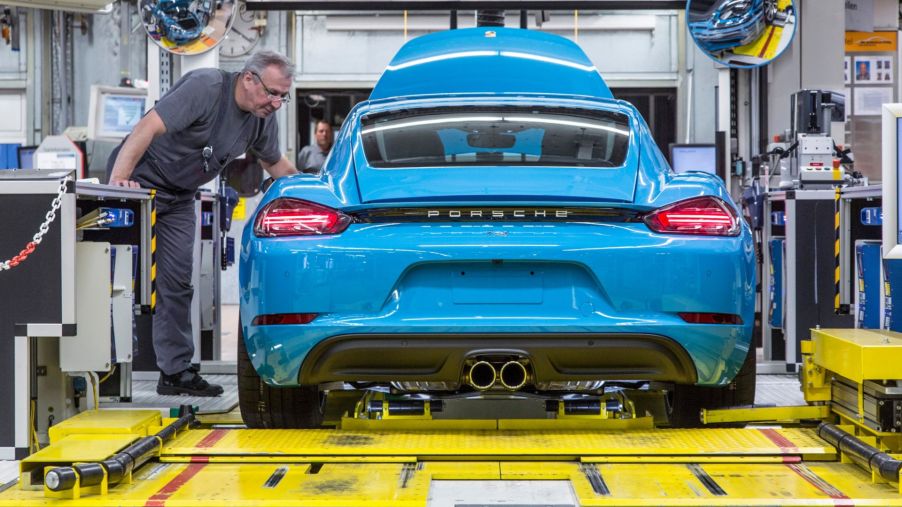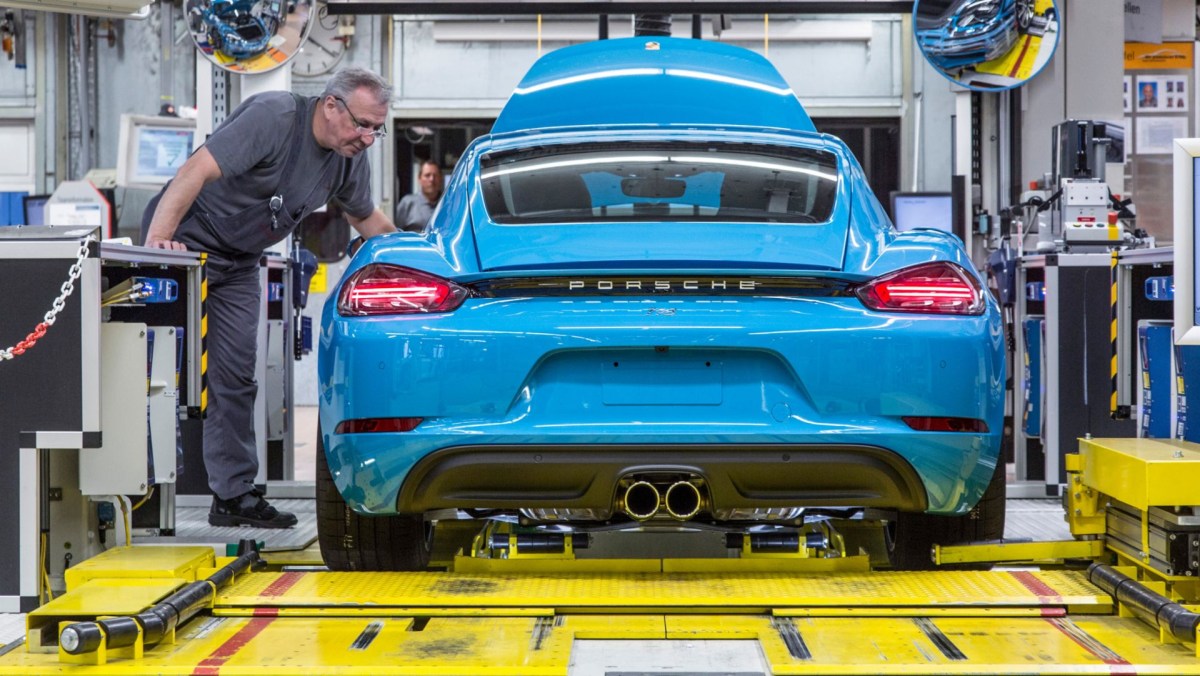
What Do the Numbers 718 Stand for in the Porsche 718?
Built with Beetle parts, the first Porsche was hand-constructed in 1939. Only three of the aluminum cars dubbed Type 64 were made, but several subsequent Porsche vehicles, such as the 718 and 911, also have numbers in their name. What do these numbers mean?

A brief history of Porsche’s racing roots
By the time the Type 64 was created, Ferdinand Porsche had already come up with 63 original car designs at the behest of the German government. The auto designer continued to use a numerical ordering system, and when the number surpassed 355 in 1948, the newly-named car company debuted its first branded vehicle: the still-revered Porsche 356.
Five years later, the Stuttgart-based automaker revealed design number 550, also known as the Spyder. In 1956, in-house designers revamped the Spyder 550A and christened it Porsche 718 RSK just in time for the 1957 24 Hours of Le Mans endurance rally.
Featuring improved front suspension, more effective brakes, and race-quality tubular framing than the 550A, the 718 RSK boasted perfect balance and aerodynamic curves, yet failed to win the competition.
Edgar Barth and Umberto Maglioli shared driving duties until an accident with an Aston Martin ended their car’s chances for a win. Other Porsche entries in the 24 competition included a 550A that experienced ignition failure after 87 laps and a 356A that broke down four hours into the race.
One 550A Porsche ran out of gas with driver Claude Storez at the wheel. Eventually, a model 550A driven by American Ed Hugus managed to finish the race in eighth place.
Ultimately, a Jaguar D-Type prevailed at the 1957 24 Hours of Le Mans. A Jaguar also won second, third, fourth, and sixth place at the prestigious event. Despite losing the rally, a Porsche 718 RSK did score a class victory at the event.
New generations of Porsche 718
The ‘718’ numbers in the name of Porsche models today pays homage to those cars that competed in the ’50s and ’60s. However, modern 718 models have a few differences from the original cars.
In 2016, Porsche revived the historic 718 designation and added it to 982 Series Boxster and Cayman models along with new turbocharged flat-four engines. Now in their fourth iteration, the 718 Boxster and 718 Cayman are wonders to behold and delightful to drive.
Porsche 718 details to know about
718 Boxster
Available with manual six or dual-clutch seven-speed automatic transmission, the Porsche 718 Boxster delivers superlative handling and a firm but unpunishing ride, says Consumer Reports. They go on to explain that although the button-overload cabin controls take some getting used to, the power top can be opened or closed even at speeds up to 43 mph.
718 Cayman
More or less identical to the Boxster, the Porsche 718 Cayman comes with a non-convertible roof. Superb handling, a firmly tuned suspension, and instantaneous response are hallmarks of this sporty Porsche that’s super fun to drive, but less than ideal for extended road trips, advises Consumer Reports.


